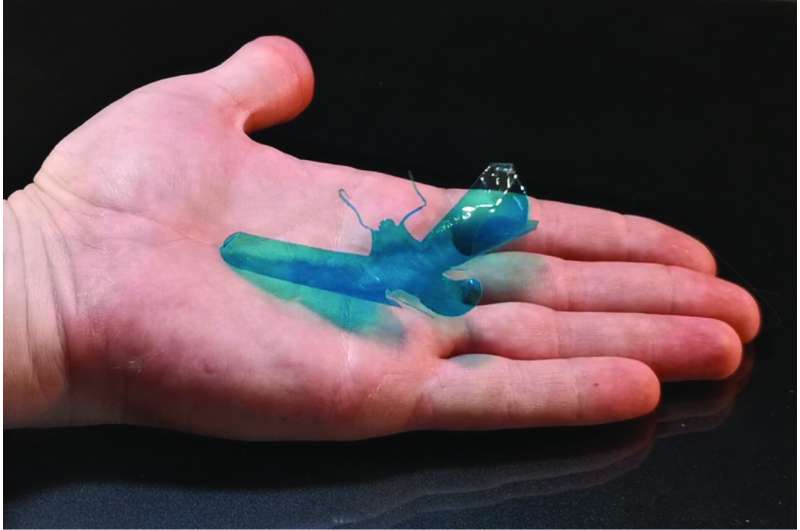Scientists at the Advanced Science Research Center at the CUNY Graduate Center (CUNY ASRC) have developed a novel approach to better understand and predict the behaviors of water-responsive materials—solid matter that can change shape by absorbing or releasing water in response to humidity fluctuations. These materials, commonly found in nature, have the potential to revolutionize a range of industries, from robotics and smart textiles to bioelectronics and clean energy generation systems.
Despite water-responsive materials‘ growing popularity in research and development, a gap exists in the theoretical understanding of how these materials generate mechanical stress when they absorb and release water. A research team led by Professor Xi Chen at the CUNY ASRC Nanoscience Initiative and City College of New York’s Chemical Engineering Department has pioneered a new quantitative method to correlate the structure of confined water with the macroscopic water-responsive properties of materials like silk.
“Water-responsive materials that react to humidity changes are highly promising for use as actuators in robotics and for energy harvesting applications, yet we lack the theories to explain or predict the stress they generate,” said Chen.
“Our research shows that nanoconfinement of water plays a crucial role in determining the behavior of regenerated silk fibroin films. The important parameters highlighted in the study, will allow us to better predict material performance and engineering for future use in water-responsive actuators” said Darjan Podbevšek, the paper’s first author and a postdoctoral research associate in Chen’s and Raymond Tu’s labs. Tu is a co-corresponding author of the paper and a Chemical Engineering professor at CUNY’s City College of New York.
The study, published in Nature Communications, introduces a groundbreaking approach to explain water-responsive materials’ behavior, focusing on how water’s molecular structure within these materials affects stress generation. Previous studies have only qualitatively explained hydration and dehydration-induced stress in WR materials, but this new approach quantitatively demonstrates that the water structure, rather than the material’s structural properties, is the main factor governing stress.
The team discovered that all the samples began to exert force when they reached a critical threshold at which their bound and mobile water ratios reached a specific value, consistent among all samples. This finding highlights the importance of the different water populations in biomaterials and suggests universal guidelines for predicting and engineering water-responsive behavior in biopolymers.
“This breakthrough not only helps us understand how water-responsive materials work, but also opens doors to exciting new applications in tissue engineering, biocompatible materials, optical coatings, and beyond,” said Tu.
The study provides key insights that could be applied to a wide range of hygroscopic and water-absorbent materials, with significant implications for industries like biomedical engineering, food preservation, and cosmetics.
More information:
Darjan Podbevšek et al, The role of water mobility on water-responsive actuation of silk, Nature Communications (2024). DOI: 10.1038/s41467-024-52715-6
Provided by
CUNY Advanced Science Research Center
Citation:
Scientists find key to engineering water-responsive biopolymers (2024, November 5)
retrieved 5 November 2024
from https://phys.org/news/2024-11-scientists-key-responsive-biopolymers.html
This document is subject to copyright. Apart from any fair dealing for the purpose of private study or research, no
part may be reproduced without the written permission. The content is provided for information purposes only.

